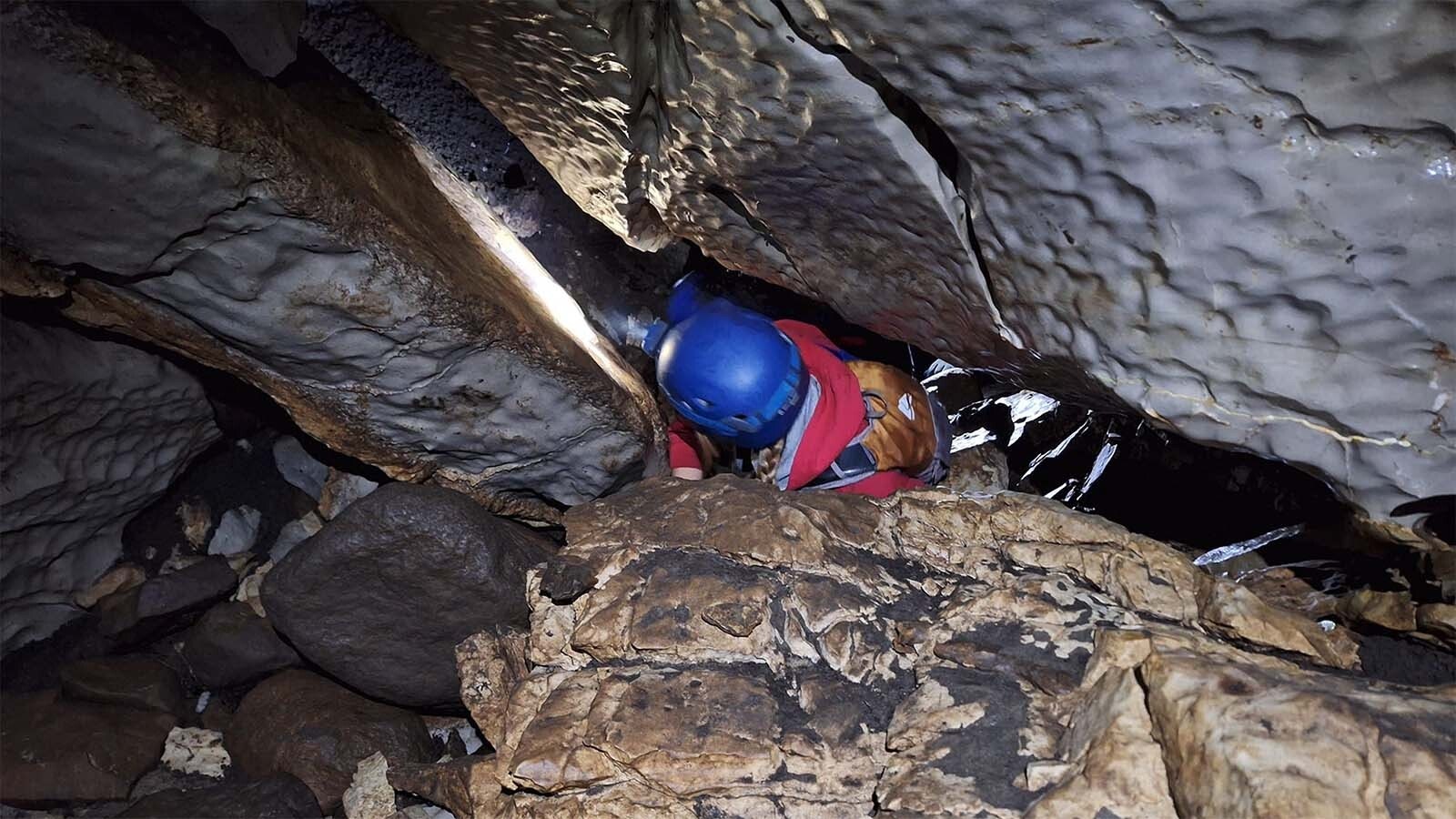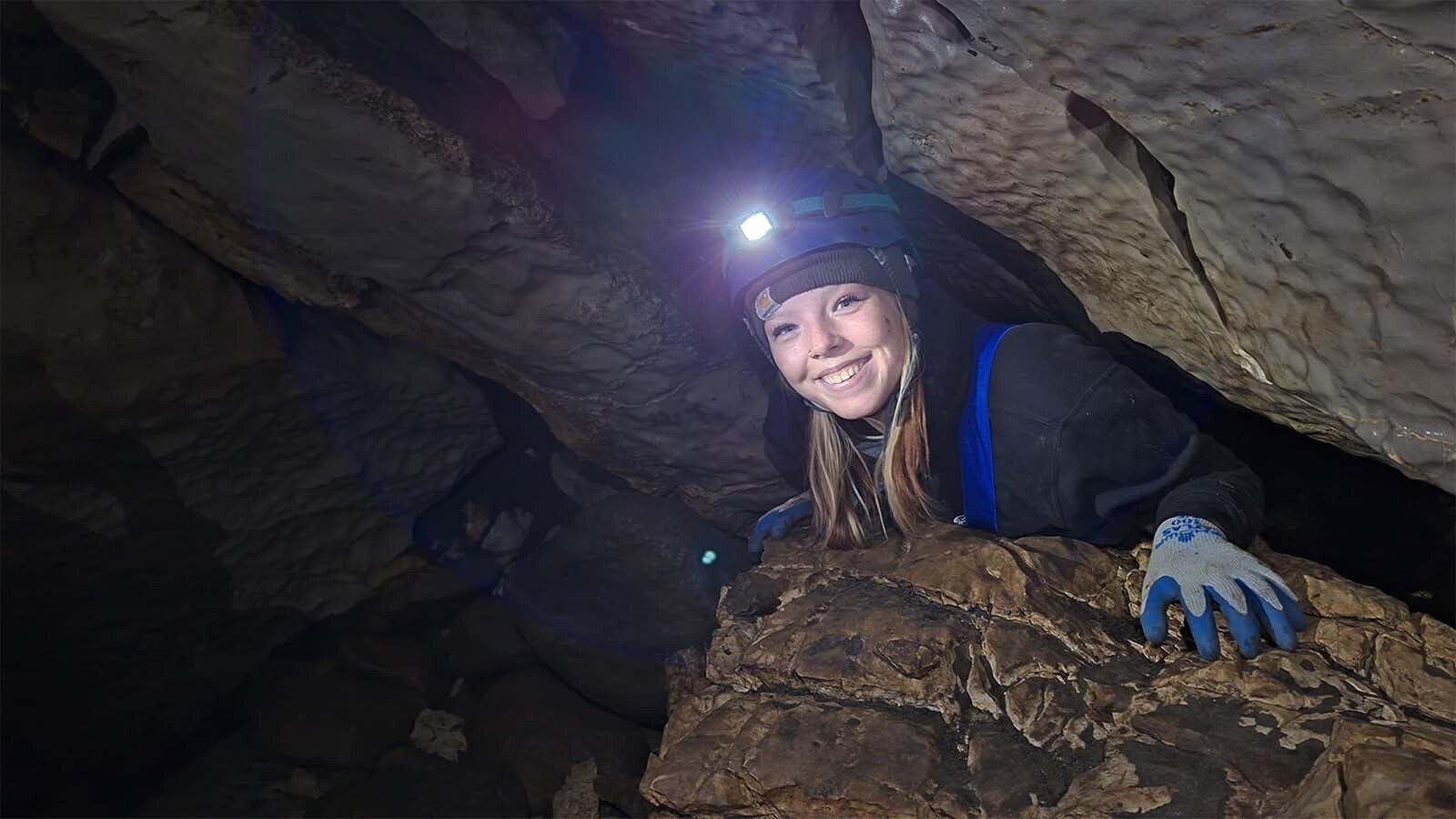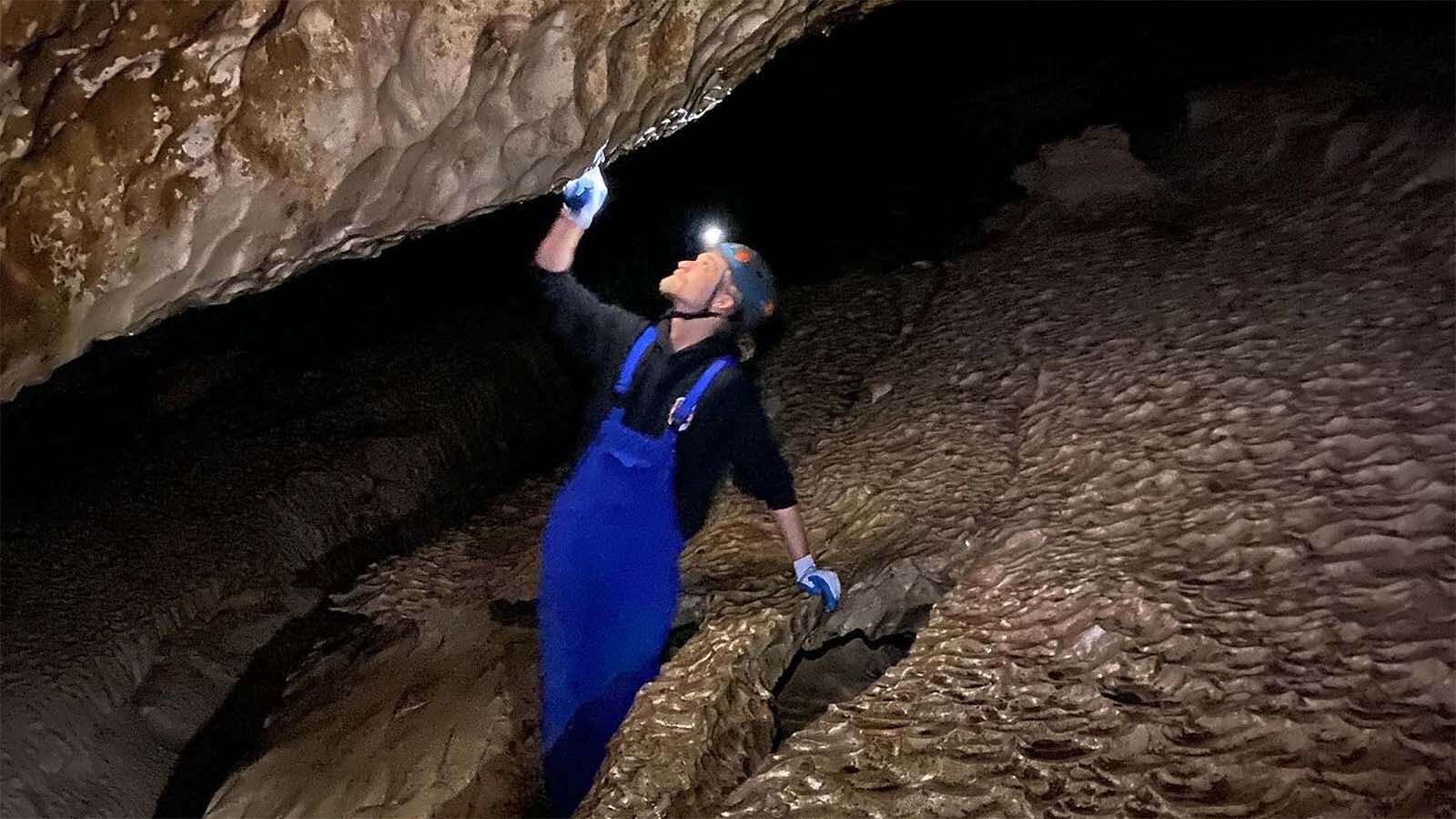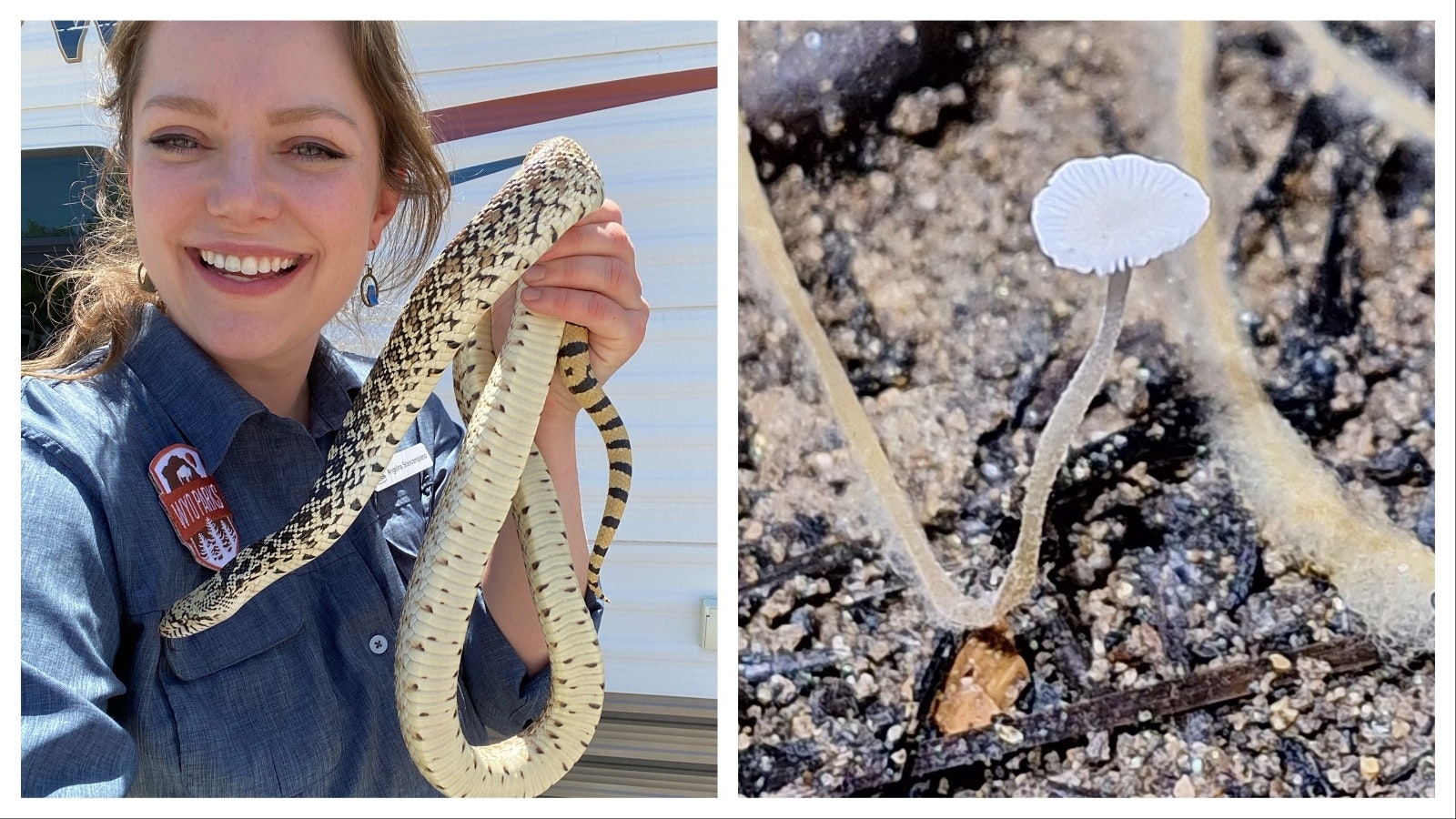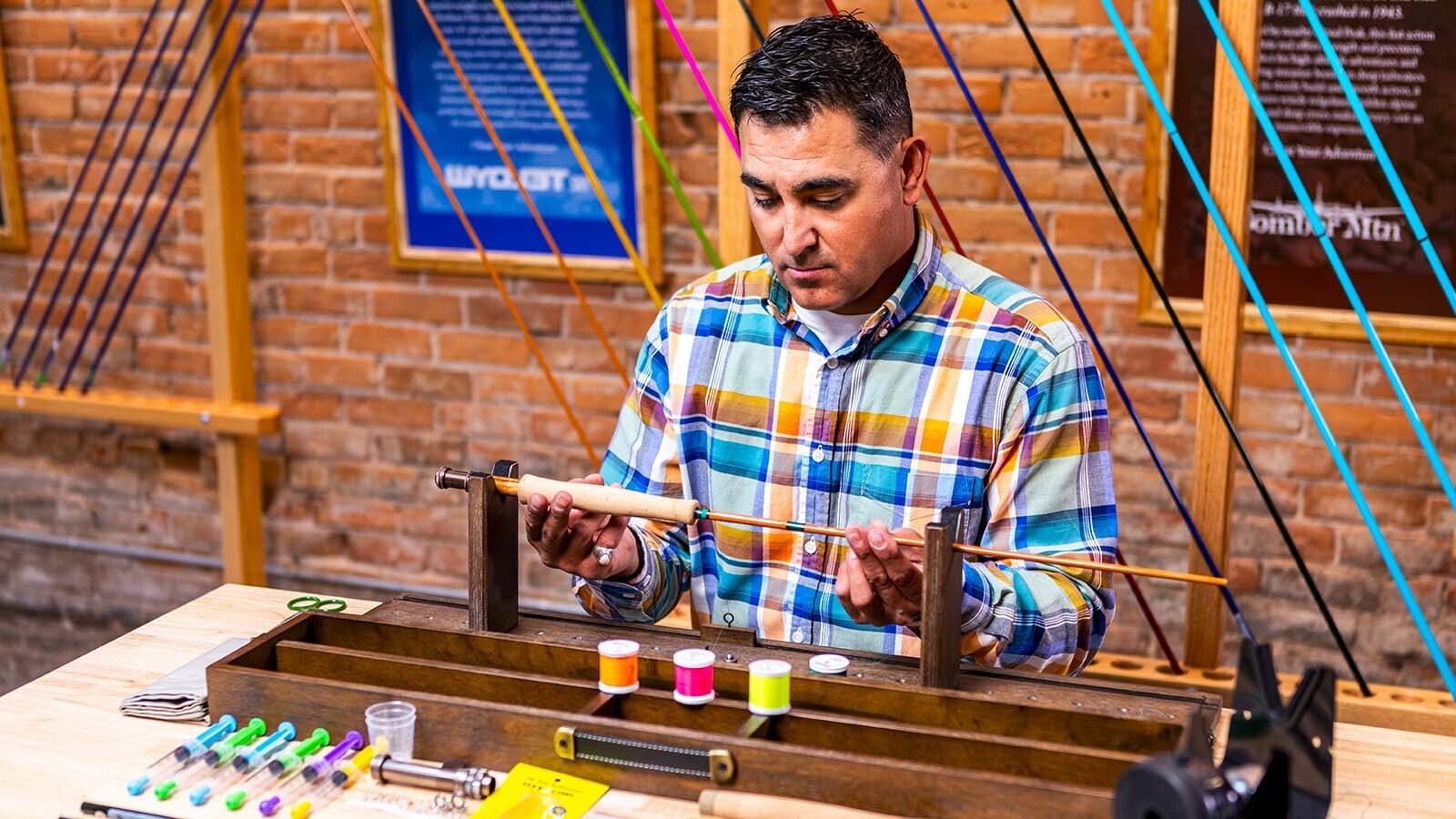For years, visitors have been intrigued that the Popo Agie River disappears deep beneath the Sinks Canyon State Park.
It turns out that over the eons, the river had formed a network of caves through the Madison limestone that then lay undiscovered for hundreds of years and can now be explored by a lucky few.
“The state park staff actually discovered the cave system decades ago,” State Superintendent and Interpretive Ranger Jessica Moore said. “It was a fluke that one of the staff noticed some water coming out of the side of the hillside. They started poking around and found a hole in the ground.”
Curious, the employee squeezed into the hole and discovered an entire cave system that was beneath the canyon. Over the years, for safety, the entrance was gated and closed to public access. Visitors could only explore the cave system if they knew someone working at the state park and could arrange a tour.
When Moore arrived in 2022, she said she was intrigued by the cave system and started working with Skylar Sargent, the primary cave guide, to build a safe public tour so that more people could experience the wonders that had been hidden beneath the earth.
Descending Into An Underground World
Moore had been hired specifically to create interpretive programs at the state park, and she saw the cave system as a perfect opportunity to build a unique experience for park visitors.
She soon discovered that September through April is the only time it is safe to explore the caves and planned accordingly since in early spring, the runoff fills the system with water. Once it is dry enough to descend into the cave, groups of 10 people, twice a month, are brought to a nearly hidden hole in the boulders.
“The cave is unique because the entrance to the cave is not a big gaping hole in the side of the cliff,” Moore said. “It’s called Boulder Choke Cave because the entrance is in a pile of boulders which comes to a choke point.”
Visitors first go through this small opening and then drop down a few feet to the first platform underground where the gate to the cave is located. From there, they drop down another eight feet and crawl over a big boulder on their hands and knees about twenty feet to the main cavern.
“When you come into that first big room you can walk upright,” Moore said. “This is where the river channeled underwater and so it is essentially walking down a tube.”
The tour will take participants through various limestone caverns and Moore cautions that crawling is required as you maneuver through certain sections.
“For the most part, you can stand up and walk through,” Moore said. “We will stop in several different rooms to look at various features, whether it’s shell fossils from ancient oceans or the scalloping in the limestone from the water that scours through this channel every spring.”
One unique feature is the snottites dripping off the ceiling, a bacterial formation that resembles slime.
“The shining star to this cave experience is the underground river,” Moore said. “This gives us a little glimpse of where the river disappears to when it drops into the sinks.”
In the back of the cave, fish swim in a pool of water and strange fungi grow. Visitors are often in awe of the opportunity to stand in the cave and soak in the surroundings, a balmy 57 degrees year-round.
Since opening these three-hour tours to visitors age 10 and older, hundreds of people have been able to experience the geology and hydrology in the park in a way that has never been offered before, Moore said.
The tours also give Moore an opportunity to talk about protecting both the participants and the cave.
“It is really important we follow decontamination protocols for protection against white-nose syndrome,” Moore said. “We want to make sure we’re not bringing anything into the cave, or bringing anything out of the cave that might impact our bat populations.”
Moore’s favorite activity is when they plunge the cavers into absolute darkness.
“We do a little bit of sensory exploration and talk about how our brain works and how our brain fills in when we can’t see things and just give people that unique experience,” Moore said.
Keeping Sinks Park Dark, Wild And Accessible
For those who are unable to join in the cave explorations, Moore offers other programming to celebrate the unique features of Sinks Canyon State Park. Another program she is passionate about is the dark skies.
In 2023, Sinks Canyon was designated as the first international dark sky site in the state of Wyoming. To keep that status, Moore offers at least four different dark sky programs each year, from photography to astronomy.
“We have this amazing natural resource above the canyon,” Moore said. “And we want to make sure people are doing what they can in their own personal lives to protect the dark skies around them, as well as enjoying the dark sky within Sinks Canyon.”
A local group called Sinks Canyon Wild has teamed up with the state park to protect the resources and still develop ways for people to be able to enjoy the park.
“It’s our vision to make sure that we are providing for the users, but also protecting the space,” Moore said. “Having well-planned recreation experiences for guests is one of the ways to do that.”
From Snakes to Ferrets
Deputy Director Nick Neylon said that five years ago there were no interpretive programs at any of the parks and that has changed drastically.
“Just this summer alone, we held almost 400 interpretive programs across the state,” Neylon said. “Last year, we saw roughly 25,000 people attend our programs so it’s having a big impact.”
Neylon said that programs like the cave exploration and dark sky programs are the main ways that the park staff can interact with visitors.
“You can go to a state park and walk down a trail on your own,” Neylon said. “But by taking part in an interpretive program, you are taking the opportunity to interpret the landscape on a completely different level.”
Moore is currently working on new programs including bringing back a rattlesnake expert.
“One of the things that I’m working on right now is having someone come in and talk about the peregrine falcons that nest in the canyon,” Moore said. “They’re a great success story of recovery of endangered species.”
Another crowd favorite is the programs on the black-footed ferret which had almost gone extinct before being discovered in the wild.
“We’ve had an amazingly positive reaction to the programs,” Neylon said. “Our interpretive rangers are also people who help build community.”
The Future
To help build this community, the state parks are looking beyond just offering programs and are planning to build up the infrastructure of the parks. Two projects under consideration are new visitor centers, one at Sinks Canyon and the other at Keyhole State Park.
“We get a lot of visitations at Sinks Canyon,” Deputy Director of State Parks Chris Floyd said. “The current visitor center is rather small, and so it’s difficult to get a school group in there, especially in the wintertime, to do educational programs.”
Floyd said that a community town hall will be held on December 1 to hear the thoughts of the Lander community on what their needs are. He said that the Keyhole State Park doesn’t even have a visitor center currently and its town hall will be in January.
As Floyd considers the logistics of providing adequate bathrooms and parking, Moore is excited for the opportunity to offer more programs such as a video tour of the caves for visitors who cannot visit in person.
“Wyoming can be a little bit brutal in the winter,” Moore said. “So, I’m really excited about the opportunity to have usable teaching space inside.”
“Our mission is to improve communities and enrich lives throughout the state of Wyoming,” Neylon said. “Our focus is on trying to find ways to make it easier and more enjoyable for people to experience our parks, historic sites and trails.”
Moore said that she is just grateful to be entrusted with this unique and special place and can’t wait to get more visitors both underground and beneath the dark skies.
Jackie Dorothy can be reached at jackie@cowboystatedaily.com.



